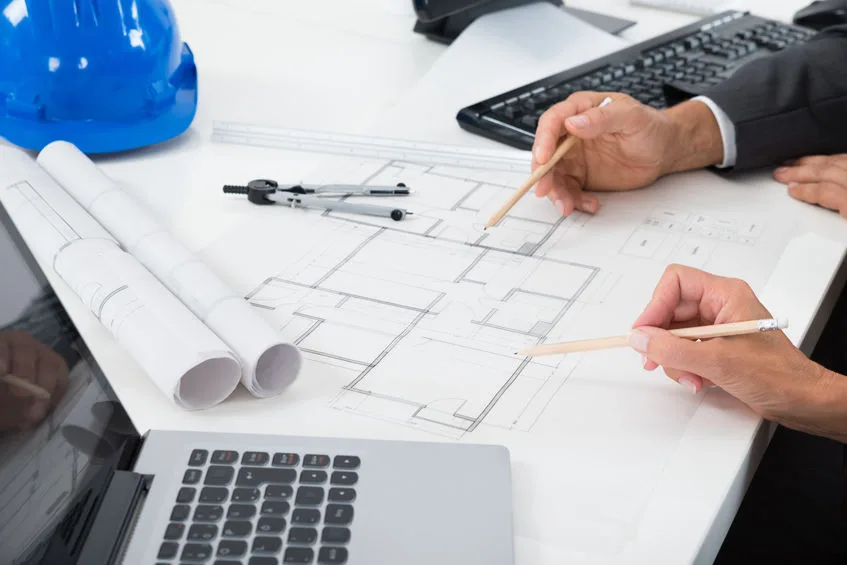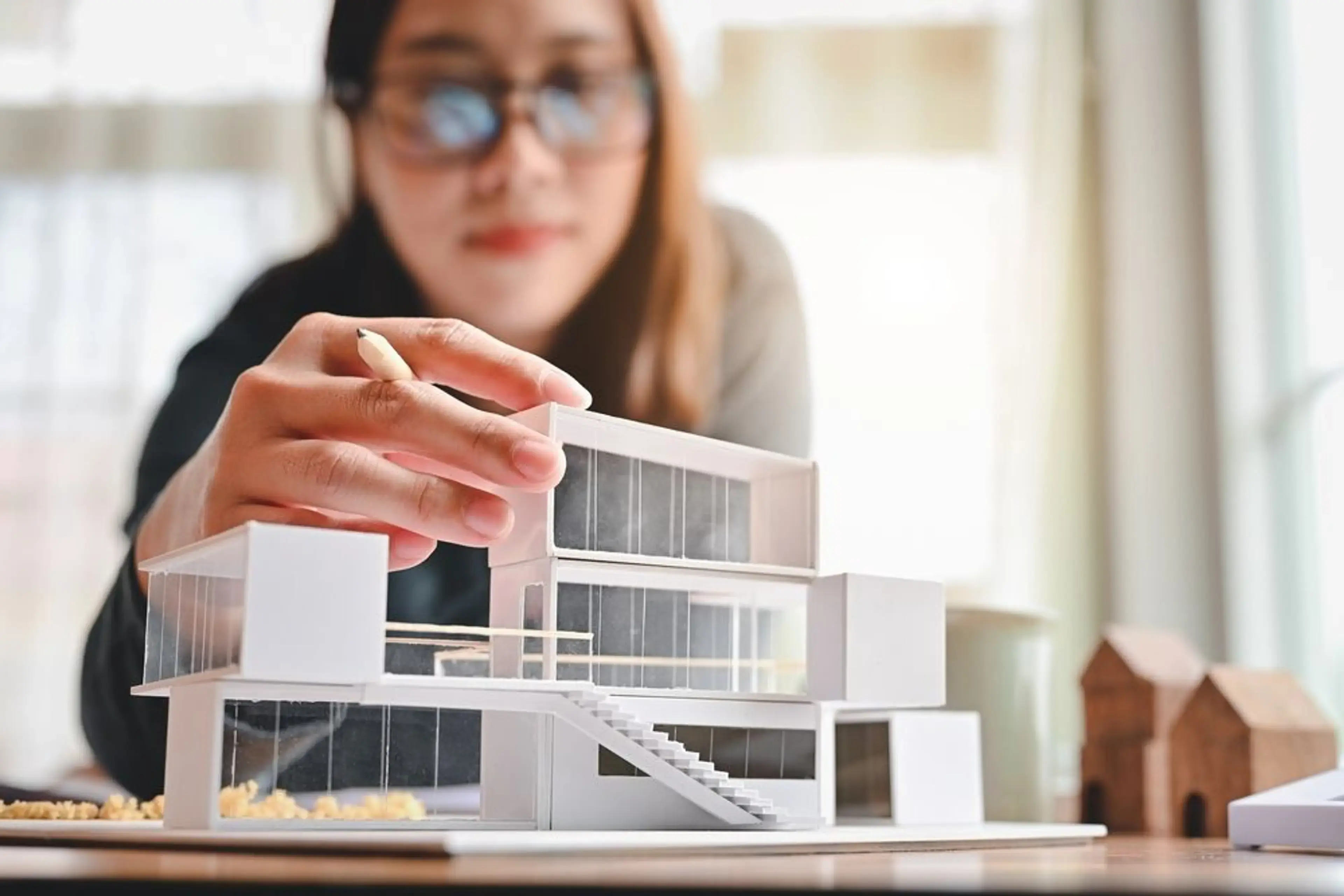Architect Portfolio Tips for Standing Out in the Industry
Wiki Article
Understanding the Diverse Job Paths Available for Aspiring Architect
As a hopeful Architect, you have a globe of profession paths waiting for you. Whether you're attracted to traditional design or the subtleties of lasting layout, there's a niche that straightens with your passions.Conventional Design: Designing Buildings and Structures
Typical architecture focuses on designing buildings and structures that mix performance with aesthetic appeal. Your layouts can show cultural heritage, showcasing neighborhood traditions while meeting modern-day demands.You'll establish skills in preparing, model-making, and website evaluation, enabling you to picture and interact your ideas effectively. Engaging with clients, you'll need to understand their vision and equate it into possible layouts.
Moreover, building codes and sustainability practices are important in your job, guaranteeing your frameworks are ecologically friendly and safe. As you expand in your occupation, you'll discover possibilities in residential, business, or perhaps remediation projects, each offering special obstacles. Accepting conventional style leads the way for a meeting occupation that pays homage to the past while shaping the future.
Urban Preparation: Forming Neighborhoods and Public Spaces
As an aspiring Architect, you can play a crucial function as an urban coordinator, transforming just how neighborhoods operate and interact. By employing area engagement approaches, you'll ensure that residents have a voice in shaping their environment. And also, incorporating sustainable design concepts will certainly help develop spaces that not just meet today's demands but likewise shield the future.Role of Urban Planners
While several may think about architects as the sole dreamers behind buildings, urban organizers play a necessary role fit the broader landscape of neighborhoods and public rooms. They analyze land use, zoning legislations, and community requires to develop lasting environments that improve lifestyle. By working together with various stakeholders, you'll aid create parks, transportation systems, and suburbs that advertise social communication and accessibility. Urban coordinators likewise concentrate on environmental considerations, making certain that developments incorporate eco-friendly rooms and assistance biodiversity. Your know-how in spatial layout and community characteristics permits you to imagine future development while protecting cultural heritage. In this critical function, you'll directly influence exactly how individuals experience their environments, making every task a possibility for positive adjustment.Area Interaction Strategies
Effective area interaction techniques are vital for city planners to assure that the voices of citizens are heard and valued in the preparation process. To promote meaningful discussion, you need to prioritize open discussion forums and workshops where neighborhood members can reveal their ideas and problems. Usage studies and social media sites to reach a wider target market, making certain varied point of views are included. Teaming up with neighborhood companies can boost depend on and help with deeper links. It is very important to supply clear info regarding decision-making processes and suggested tasks, enabling residents to really feel educated and encouraged. By actively incorporating and paying attention feedback, you'll produce rooms that reflect the neighborhood's needs, eventually leading to more sustainable and successful city environments. Accept openness and continuous discussion for lasting effect.Sustainable Design Principles
When developing metropolitan areas, integrating sustainable style principles is vital for producing environments that thrive both environmentally and socially. You need to begin by concentrating on energy effectiveness, using products that reduce waste and promote recycling. Consider integrating green areas, like parks and gardens, to improve biodiversity and improve air quality. Advertising walkability and public transportation can decrease dependence on vehicles, fostering a healthier area.Creating with water conservation in mind is also crucial-- think concerning rainfall gardens and absorptive surfaces to take care of stormwater. Involving neighborhood members throughout the planning procedure warranties that the areas you create fulfill their needs and urge social communication. By accepting these principles, you'll add to vibrant, lasting city landscapes that profit everybody.

Landscape Design: Creating Sustainable Exterior Atmospheres
As you explore landscape style, you'll find crucial layout principles that develop functional and gorgeous outdoor rooms. Sustainable practices play a crucial role in making sure these atmospheres thrive while minimizing ecological impact. And also, you'll discover a range of career possibilities that allow you to make an actual difference in just how people engage with nature.Style Concepts in Landscape
Understanding layout principles in landscape architecture is important for creating sustainable outdoor atmospheres that balance with nature. You'll need to contemplate aspects like balance, percentage, and range to ensure your designs really feel natural and inviting. Integrating indigenous plants not only boosts biodiversity but additionally reduces water usage, making your landscape durable. Think of the flow of space and exactly how individuals interact with it; pathways and seating locations ought to invite expedition and leisure. Additionally, take note of seasonal changes, creating with products that enhance the surroundings year-round (Architect). By prioritizing sustainability and aesthetics, you can produce exterior rooms that improve the community and promote well-being. Accepting these concepts will certainly establish a solid structure for your career in landscape design.Lasting Practices Summary
Sustainable practices in landscape architecture not just focus on visual appeals yet also focus on ecological wellness and source conservation. You can create rooms that advertise soil health and wellness, such as making use of natural materials and practicing permaculture principles. Inevitably, these techniques assure your designs profit both people and the atmosphere for years to come.Career Opportunities Exploration
With a more info strong foundation in sustainable methods, landscape style supplies a variety of career paths that enable you to make a meaningful effect on the atmosphere. You might work as a landscape designer, producing cosmetically pleasing and functional outdoor spaces, or specialize in environmental repair, helping to restore damaged environments. Urban coordinators usually team up with landscape designers to create green spaces click here in urban setups, boosting city livability. If you're enthusiastic concerning education and learning, take into consideration coming to be a landscape style teacher, inspiring future generations. Furthermore, you may work with nonprofits focused on ecological sustainability or take part in study to introduce new practices. Each path not just forms beautiful settings however likewise fosters a much healthier earth for future generations.Sustainable Layout: Focusing on Eco-Friendly Practices
As you discover your job in design, embracing eco-friendly practices can establish you apart in an affordable area. Sustainable layout concentrates on developing structures that reduce ecological impact while improving owner wellness. By integrating eco-friendly materials, energy-efficient systems, and lasting structure techniques, you'll add to a greener future.Beginning by obtaining understanding of environment-friendly accreditations like LEED or BREEAM, which can strengthen your credentials. Think about how natural light, air flow, and thermal efficiency can optimize style. Team up with engineers and ecological specialists to introduce solutions that minimize waste and preserve resources.
Don't forget the relevance of area participation-- appealing regional stakeholders can influence layouts that integrate with the setting. As clients significantly focus on sustainability, your know-how in eco-friendly practices will not only draw in jobs yet additionally accomplish your interest for liable style. Embrace this important element of the occupation, and enjoy your occupation grow.
Historical Conservation: Shielding and Recovering Social Heritage
While you begin on your building journey, take into consideration the necessary role of historical conservation in keeping our cultural heritage. This area focuses on the defense and reconstruction of substantial structures, sites, and frameworks that tell the tales of our past. By participating in historic preservation, you'll aid guard the architectural legacy that forms area identity.As a historical preservation Architect, you'll examine historical value and examine the condition of frameworks. You'll function carefully with historians and preservationists to ensure genuine repair techniques are used. This profession course enables you to blend creative thinking with research, allowing you to make remedies that value initial products and workmanship.
Your work not just adds to sustainability by recycling existing buildings yet likewise fosters a feeling of pride within areas. Accepting this course will assist you become a guardian of history, protecting the stories and looks that enrich our lives.
Inside Style: Enhancing Indoor Spaces
Historic preservation and indoor architecture both share a dedication to enhancing the developed setting, but they focus on various elements. While historical conservation emphasizes maintaining a structure's social and historical worth, interior architecture nos in on enhancing interior rooms for functionality and appearances.As an aspiring Architect, you'll discover that indoor style allows you to blend creative thinking with technical skills. You'll develop areas that not only look good however likewise promote convenience and effectiveness. This area involves understanding how light, shade, and products connect within a space, affecting mood and functionality.
You'll work with different jobs, from property homes to industrial offices, making certain that each environment meets the needs of its owners. By focusing on customer experience, you can change insides right into practical and inspiring rooms, making a considerable influence on how people connect with their surroundings. Accept the chance to enhance indoor environments and shape the way individuals work and live.
Industrial Layout: Merging Functionality With Aesthetic Appeals
Commercial layout plays a vital duty in creating products that flawlessly mix aesthetic appeals with performance, making certain that what you make use of everyday is not only aesthetically enticing however likewise useful. As an here aspiring Architect, you could involve on your own in this field, concentrating on making every little thing from furniture to customer electronic devices. Your job entails understanding customer requirements, materials, and manufacturing processes, permitting you to create ingenious solutions that enhance daily experiences.In commercial design, you'll frequently work together with designers, makers, and marketing experts, making certain that your layouts are not just attractive yet likewise feasible. This occupation path offers a vibrant atmosphere where creativity meets practicality, making it a fulfilling selection for architects interested in forming the products of tomorrow.
Frequently Asked Concerns
What Educational Credentials Do I Need to End Up Being a Designer?
To become an engineer, you'll require a professional level in style, usually a Bachelor's or Master's. Furthermore, you'll have to finish an internship and pass the Architect Registration Examination to practice legally.Exist Certification Needs for Different Building Occupation Paths?
Yes, there're qualification demands for various building paths. Architect. You'll need to pass exams, total internships, and in some cases pursue specialized training, depending upon your chosen focus, like landscape architecture, metropolitan design, or historic preservationWhat Software Program Abilities Are Important for Designers Today?

How Can I Gain Practical Experience While Researching Design?
You can gain sensible experience by interning at building firms, getting involved in design competitors, volunteering for area tasks, or teaming up with classmates on real-world jobs. These chances enhance your abilities and build useful connections in the industry.What Task Opportunities Exist Outdoors Conventional Style Firms?
You can check out numerous job opportunities outside typical design companies, like urban planning, interior decoration, landscape design, construction administration, realty advancement, or also roles in sustainability consulting. Each deals one-of-a-kind challenges and rewards.Whether you're attracted to traditional design or the subtleties of lasting design, there's a specific niche that straightens with your rate of interests.When designing urban areas, including lasting design principles is vital for producing settings that grow both ecologically and socially.As you check out landscape design, you'll find crucial design principles that produce attractive and functional outside areas.Comprehending design concepts in landscape architecture is crucial for producing sustainable outdoor settings that harmonize with nature.In industrial style, you'll usually team up with engineers, makers, and marketing professionals, ensuring that your designs are not just lovely yet additionally practical.
Report this wiki page